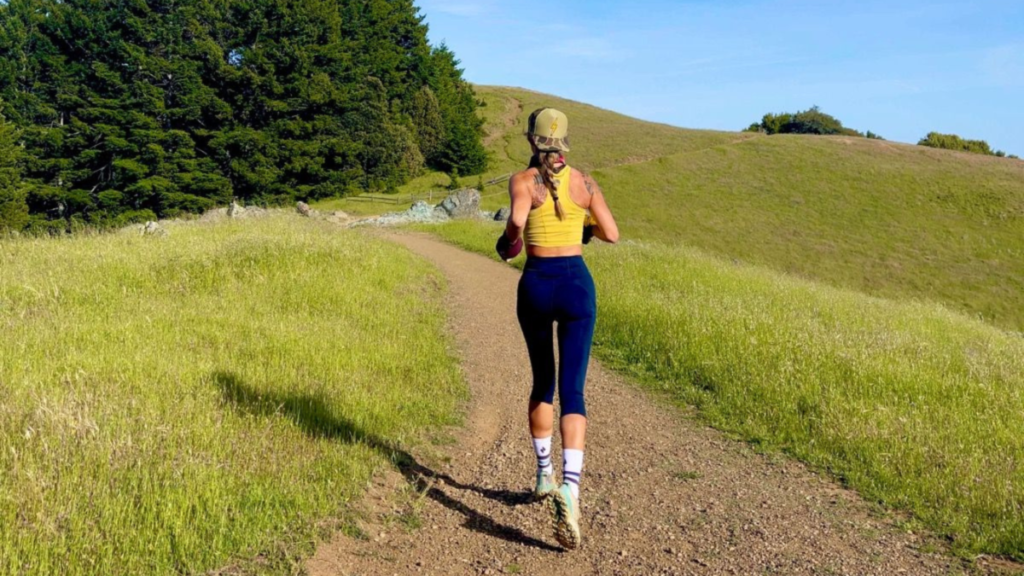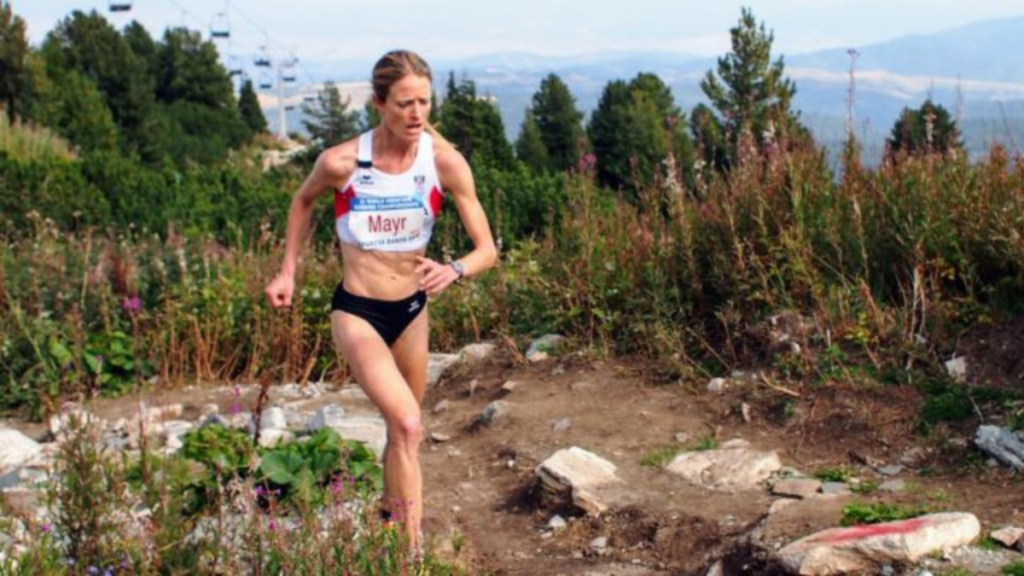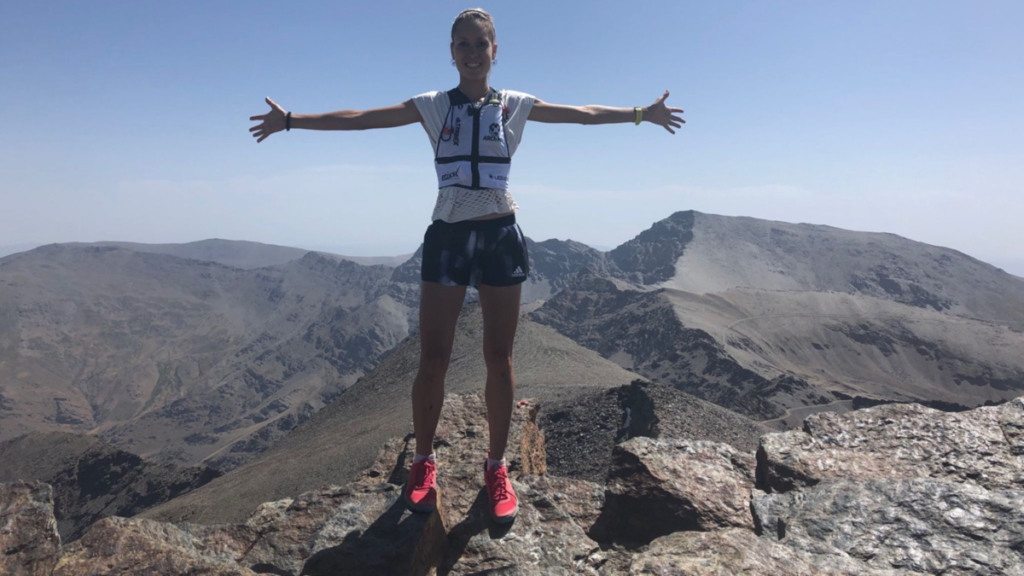
We all know that trail running is a great exercise option for losing weight. But is the weight we lose just unwanted fat, or are we wasting away our precious muscle mass at the same time?
Trail running, just like all load-bearing exercises, causes muscle damage. Muscle fibers break down during exercise and the body can use that protein from the muscle fiber to fuel further exercise. Proper nutrition and recovery allow the muscle to regrow stronger rather than causing muscle loss.
Let’s take a closer look at what can cause us to lose muscle while trail running as well as what we can do to prevent that from happening.
Does Trail Running Cause Muscle Loss
In short, trail running, just like any other form of exercise that places a load on your muscle, does cause muscle loss. Before you get into a panic and dump your trail running shoes in the bin, let me explain what I mean.
When you run trails, some of the muscle fibers in your legs will break down under the eccentric load of uphill and downhill running along the trails. During your recovery after your run, your body will rebuild those muscle fibers stronger than they were before. This is the adaptive process where you gain strength through the process of your training.
The key factor as to whether you lose muscle or not is whether your post-run meal has enough protein to ensure that your overall nutrition is protein-positive. The broken-down muscle fibers will be absorbed and burned as fuel during your long run. Protein is the same number of Calories per gram as fat so the body views them as similar fuel sources.
If your body has burned the protein from the broken-down muscle fibers as fuel, it is vital that your nutrition has enough protein to be able to rebuild those muscle fibers and make them stronger than they were before.
How To Set Body Weight Goals As A Trail Runner
We need to clearly define our athletic goals so that we can see what body weight will best match our athletic goal so that we can work toward that.
If your athletic goal is to qualify for the Olympic marathon or chase a national record over that distance then your goal requires being as light as possible. Elite-level marathon runners only train enough strength to be able to get them to the finish line and no further. Extremely lean body types like those of elite marathon runners are not sustainable over the long term without the real risk of illness and injury.

Perhaps your athletic goal is to build as much muscle as you can while developing pretty good cardio at the same time. In this instance, your main focus will be on lifting heavy in the gym and keeping most of your run workouts short and intense. Intervals and hill sprints work very well as run workouts that won’t hurt your gains. I’d also keep my weekly long run to around 5 to 7 miles and put that run in the early morning when I have leg day in the gym.
In both of these instances, the athlete’s nutrition plan will reflect their athletic goal. An elite athlete trying to lean down for a marathon will train at a slight calorie deficit and keep protein intake at a level that is just enough for recovery.
The athlete trying to build muscle will ensure that their nutrition is balanced to a calorie surplus as well as being protein positive. By protein positive, I mean that their protein intake every day will be more than what was broken down during their workouts. Speaking to athletes who are training to build muscle, their challenge seems to be getting in enough calories without having gastric issues during training.
For most of us, we are somewhere between these two extremes as trail runners. We need to ensure that we have the strength needed to be able to cope with the physical demands of running on technical trails. I find that my balance is doing 2 lifting sessions a week in the gym (3 per week during the off-season) for my strength work and making sure that my nutrition gives me enough calories and protein to properly recover from my runs and workouts.
How Do Runners Prevent Muscle Loss
The way that we as trail runners can prevent the loss of muscle mass is to put in 2 to 3 strength training workouts in the gym each week. It is important that these lifting sessions are strength focused.
By strength focused I mean that the goal of each of these workouts should be building muscle strength and size, rather than endurance. Where an endurance workout in the gym would involve lighter weights and more repetitions per set, you will want to increase the weight to the level where you can only manage between 6 and 8 repetitions per set.
Again, nutrition is vital on strength training days. You will need a protein surplus to build the extra muscle mass and you will need to take in additional Calories so that the extra protein that you eat can be used for building muscle and not just burned as fuel during your workouts.
How Long Should I Run Without Losing Muscle
An average runner whose goal is to lose fat while maintaining muscle mass will need to do about 150 minutes per week of moderate to high-intensity cardio activity.
So you can maintain muscle mass as an average trail runner by keeping your training to around 150 minutes per week and including intervals and hills. Vitally though, your nutrition should be sufficient to support your training and fat-loss goals.
Remember that if you are building up to an ultramarathon, you will need a much higher training volume and a similarly higher calorie intake to maintain muscle mass. Remember that protein and fat have the same number of Calories per gram, so our bodies can convert both protein and fat into energy to fuel our runs.
How Far Can I Run Without Losing Muscle Mass
The question about how far you can run without losing muscle mass is less about the distance of each run and more about how you manage your nutrition. Our bodies are able to break down fat, protein, and carbohydrates into the energy needed to fuel our runs and our everyday life. Our body converts carbohydrates into energy most easily. The process of converting fats and proteins into energy is somewhat slower and dependent on what is readily available.

While we run, muscle fibers are broken down by the impact of running. The protein from the broken-down muscle fibers will be available as potential fuel for the remainder of our run.
Our nutrition must contain enough protein to rebuild those broken-down muscle fibers. However, there is more to the story of post-workout nutrition than just consuming the protein calories for rebuilding muscle. The first calories we consume after a workout will be used to replace the glycogen stores in our body that were depleted during our run. If those calories are in the form of protein then the protein will be converted to glycogen and not be used for rebuilding the broken-down muscle fibers.
That is why my coaches have always told me to consume some carbohydrates within 30 minutes of finishing a run, and then eat a protein-rich meal 90 minutes later so that the calories from the initial meal can be used for replacing glycogen.
For more information on how much running is too much, here is the article that I wrote on Trail Run Planet about “Is running 10 miles every day too much.” Give that a read once you are finished with this article.
Will I Lose Muscle If I Run In The Morning
There was an interesting study in 2015 that not only showed that cortisol levels were highest in the early morning but also that exercising on an empty stomach first thing in the morning actually raises cortisol levels further.
This means that running in a fasted state immediately when you wake up in the morning increases the rate at which your body will convert broken-down muscle fibers into energy.
To help prevent that from happening to you, here is the article that I wrote about “What to eat before running.”
Can Muscle Loss Be Restored
Luckily for us, any loss of muscle mass can be rebuilt with resistance/weight training in the gym and managing our nutrition plan to support lean muscle growth.
That is why I increase the number of gym sessions I do per week during the winter off-season. It allows my body to rebuild any muscle mass that may have been lost during the trail running season. There is the added benefit that training in the gym is warmer and more pleasant than running mountain trails in the wet and biting cold of winter.
In order to get more variety into your weight routine at the gym, here is the article that I wrote about “28 Gym Exercises For Trail Runners” that you have likely never tried.
